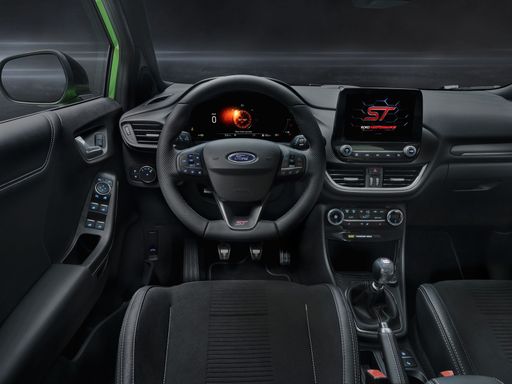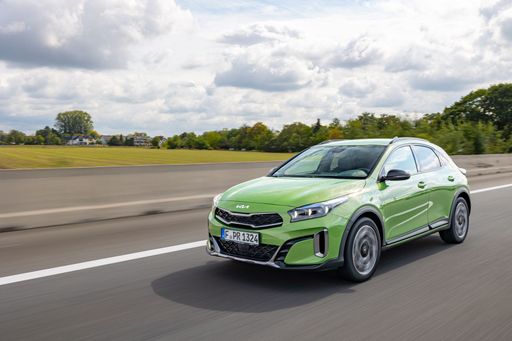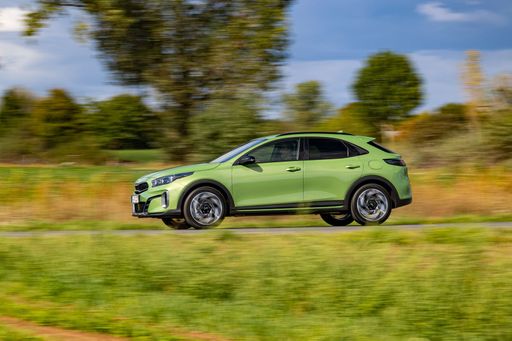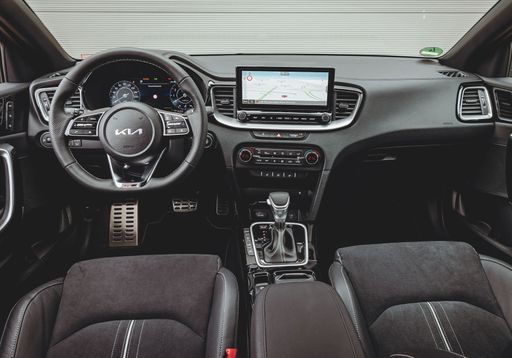Ford Puma vs Kia XCeed – Kumpi auto on parempi valinta?
Olipa kyse arjesta, perheestä tai pitkistä matkoista – tässä näkyvät erot.
Selvitä, sopiiko Ford Puma vai Kia XCeed paremmin elämäntyyliisi.
The Battle of the Subcompact SUVs: Ford Puma vs. Kia XCeed
In the automotive world, subcompact SUVs have carved a niche for themselves, offering the rugged appeal of SUVs while maintaining the nimbleness of smaller cars. Two prominent contenders in this category are the Ford Puma and the Kia XCeed. Both vehicles promise a blend of style, efficiency, and performance, making them strong contenders for anyone looking to buy a car in this segment. Let's take a closer look at how these two models stack up against each other.
Design and Dimensions
The Ford Puma boasts a sleek and compact design, with dimensions measuring between 4186 mm and 4226 mm in length, 1805 mm in width, and a height of 1550 mm to 1555 mm. On the other hand, the Kia XCeed, slightly longer, stretches out to 4395 mm in length, 1826 mm in width, and stands at a height of 1495 mm. This makes the XCeed a bit more expansive but lower to the ground compared to the Puma.
Engine and Performance
Under the hood, the Ford Puma offers diverse powertrains, featuring a petrol mild-hybrid electric vehicle (MHEV) option and a fully electric variant. The power output ranges from 125 HP to 168 HP, with a torque between 170 Nm and 290 Nm. In contrast, the Kia XCeed is powered by a traditional petrol engine, providing options between 100 HP and 140 HP and a torque range of 172 Nm to 253 Nm.
Regarding acceleration, the Puma can sprint from 0-100 km/h between 7.4 and 9.8 seconds, whereas the XCeed does it in 10.2 to 13.4 seconds, giving the Puma a noticeable edge in terms of sheer acceleration boost.
Fuel Efficiency and Range
The Puma offers a competitive edge with its hybrid and electric drive capabilities. It boasts fuel consumption of 5.4 to 6 L/100km in the petrol MHEV variant and a consumption of 13.1 to 13.7 kWh/100km for the electric version. With an electric range of up to 376 km and a battery capacity of 43 kWh, the Puma provides flexibility for both short-city commutes and longer journeys.
Meanwhile, the Kia XCeed, equipped solely with petrol engines, records consumption rates between 6.3 and 6.5 L/100km. Although not an eco-warrior in terms of emissions when compared to Puma’s hybrid variations, it offers reliability and familiarity in its traditional combustion setup.
Interior and Cargo Space
Both vehicles comfortably seat five passengers, suitable for small families or group outings. In terms of cargo space, the Puma provides a trunk capacity of between 456 L and 523 L, offering more versatility for carrying luggage or groceries. The XCeed, while generous, offers slightly less at 426 L of trunk capacity.
Technology and Features
The Ford Puma is equipped with modern driving aids and infotainment options such as advanced sync systems, offering seamless integration with smartphones for navigation, music, and driving data. Its innovative hybrid systems also feature smart regenerative braking to optimize energy use.
Conversely, the Kia XCeed mirrors many of these technological offerings but leans more toward user-friendly interfaces and robust safety systems, ensuring a safe ride with lane-keeping assistance and adaptive cruise control among others.
Conclusion
The battle between the Ford Puma and Kia XCeed is a close one, with each car showcasing unique strengths. The Puma's innovative hybrid system and electric variant offer cutting-edge technology, making it the ideal choice for environmentally conscious drivers. Meanwhile, the XCeed's simplicity, reliability in performance, and slightly greater dimensions provide a spacious and user-friendly drive.
Whether prioritizing fuel efficiency and cutting-edge green technology in the Puma or leaning toward the traditional reliability and slightly more space in the XCeed, both cars represent top choices in the subcompact SUV category.
Tässä mennään yksityiskohtiin: tekniset erot tarkemmin
Kustannukset ja kulutus: Hinta ja kulutus ovat tärkeimpiä ostopäätökseen vaikuttavia tekijöitä – ja juuri täällä erot usein korostuvat.
Kia XCeed on hinnassa vähäinen edullisempi – sen lähtöhinta on 27000 €, kun taas Ford Puma maksaa 28900 €. Ero on noin 1910 €.
Polttoaineenkulutuksessa näkyy ero: Ford Puma kuluttaa 5.40 L ja on siten hieman taloudellisempi kuin Kia XCeed, jonka kulutus on 6.40 L. Ero on noin 1 L /100 km.
Moottori ja suorituskyky: Moottorin alta paljastuu, kumpi malli on urheilullisempi ja kiihtyy paremmin.
Moottoritehossa Kia XCeed on melkein huomaamaton etulyöntiasemassa – 180 hv verrattuna 168 hv:een. Ero on noin 12 hv hv.
Kiihdytyksessä 0–100 km/h Ford Puma on vähän nopeampi – 7.40 s vs. 8.50 s. Ero on noin 1.10 s sekuntia.
Huippunopeus on sama – molemmat yltävät 210 km/h:een.
Vääntömomentissa näkyy myös ero: Ford Puma vetää melkein huomaamaton voimakkaammin, 290 Nm verrattuna 265 Nm:een. Eroa on noin 25 Nm.
Tila ja käytännöllisyys: Sisätilat, tavaratila ja kantavuus ratkaisevat auton arjen käytettävyyden. Mukavuus ja joustavuus ovat avainasemassa.
Molemmissa autoissa on tilaa 5 henkilölle.
Omapainossa Ford Puma on melkein huomaamaton kevyempi – 1316 kg verrattuna 1351 kg:een. Painoero on noin 35 kg.
Tavaratilan koossa Ford Puma tarjoaa vähän enemmän – 523 L verrattuna 426 L:een. Ero on noin 97 L.
Maksimikantavuudessa Kia XCeed pärjää kevyt paremmin – jopa 1378 L, noin 95 L enemmän kuin Ford Puma.
Kantavuudessa Kia XCeed on tuskin havaittava parempi – 479 kg verrattuna 469 kg:een. Ero on noin 10 kg.
Yhteenvetomme: Kia XCeed osoittautuu olevan voittaa selvästi ja saa siksi tittelin DriveDuel Champion!
Tässä vertailussa Kia XCeed on monipuolisempi kokonaisuus.
Ford Puma
Ford Puma on saanut runsaasti huomiota upealla muotoilullaan ja käytännöllisillä ominaisuuksillaan. Sen kompakti koko yhdistää mukavasti energisen ajokokemuksen ja tilavat tavaratilat. Tämä auto on täydellinen valinta kaupunkiajoon, yhdistäen tyylikkyyden ja toimivuuden saumattomasti.
Tiedot @ puma.fordpresskits.com
@ puma.fordpresskits.com
 @ puma.fordpresskits.com
@ puma.fordpresskits.com
 @ puma.fordpresskits.com
@ puma.fordpresskits.com
 @ puma.fordpresskits.com
@ puma.fordpresskits.com
Kia XCeed
Kia XCeed yhdistää tyylikkään muotoilun ja käytännöllisyyden, mikä tekee siitä erinomaisen valinnan kaupunkiajoon. Sen sisätilat tarjoavat runsaasti tilaa ja mukavuutta, mikä tekee jokaisesta matkasta nautinnollisen. XCeed on myös varusteltu uusimmalla teknologialla, joka parantaa sekä ajokokemusta että turvallisuutta.
Tiedot @ press.kia.com
@ press.kia.com
 @ press.kia.com
@ press.kia.com
 @ press.kia.com
@ press.kia.com
 @ press.kia.com
@ press.kia.com

|

|
|
|
|
Kustannukset ja kulutus |
|
|---|---|
|
Hinta
28900 - 42400 €
|
Hinta
27000 - 38500 €
|
|
Kulutus L/100km
5.4 - 5.9 L
|
Kulutus L/100km
6.4 - 6.8 L
|
|
Kulutus kWh/100km
13.1 - 13.9 kWh
|
Kulutus kWh/100km
-
|
|
Sähköinen toimintasäde
361 - 376 km
|
Sähköinen toimintasäde
-
|
|
Akun kapasiteetti
43 kWh
|
Akun kapasiteetti
-
|
|
CO2
0 - 135 g/km
|
CO2
144 - 155 g/km
|
|
Polttoainesäiliön tilavuus
42 L
|
Polttoainesäiliön tilavuus
50 L
|
Mitat ja kori |
|
|---|---|
|
Kori
SUV
|
Kori
SUV
|
|
Istuimet
5
|
Istuimet
5
|
|
Ovet
5
|
Ovet
5
|
|
Omamassa
1316 - 1563 kg
|
Omamassa
1351 - 1419 kg
|
|
Tavaratila
456 - 523 L
|
Tavaratila
426 L
|
|
Pituus
4186 - 4226 mm
|
Pituus
4395 mm
|
|
Leveys
1805 mm
|
Leveys
1826 mm
|
|
Korkeus
1550 - 1555 mm
|
Korkeus
1483 - 1495 mm
|
|
Maksimi tavaratila
1216 - 1283 L
|
Maksimi tavaratila
1378 L
|
|
Kantavuus
367 - 469 kg
|
Kantavuus
471 - 479 kg
|
Moottori ja suorituskyky |
|
|---|---|
|
Moottorityyppi
Sähkö, Bensiini MHEV
|
Moottorityyppi
Bensiini
|
|
Vaihteisto
Automaatti, Manuel
|
Vaihteisto
Manuel, Automaatti
|
|
Vaihteiston tyyppi
Alennusvaihteisto, Manuaalivaihteisto, Kaksoiskytkin automaatti
|
Vaihteiston tyyppi
Manuaalivaihteisto, Kaksoiskytkin automaatti
|
|
Vetotapa
Etuveto
|
Vetotapa
Etuveto
|
|
Teho hv
125 - 168 hv
|
Teho hv
115 - 180 hv
|
|
Kiihtyvyys 0-100 km/h
7.4 - 9.8 s
|
Kiihtyvyys 0-100 km/h
8.5 - 11.7 s
|
|
Huippunopeus
160 - 210 km/h
|
Huippunopeus
182 - 210 km/h
|
|
Vääntömomentti
170 - 290 Nm
|
Vääntömomentti
200 - 265 Nm
|
|
Sylinterien lukumäärä
3
|
Sylinterien lukumäärä
3 - 4
|
|
Teho kW
92 - 124 kW
|
Teho kW
85 - 132 kW
|
|
Iskutilavuus
999 cm3
|
Iskutilavuus
998 - 1598 cm3
|
Yleiset |
|
|---|---|
|
Mallivuosi
2025
|
Mallivuosi
2025
|
|
CO2-tehokkuusluokka
A, D
|
CO2-tehokkuusluokka
E
|
|
Merkki
Ford
|
Merkki
Kia
|
Onko Ford Puma saatavana eri vetotavoilla?
Mallia tarjotaan Etuveto-versiona.
Näytetyt hinnat ja tiedot ovat arvioita, jotka perustuvat Saksan listahintoihin, ja voivat vaihdella maittain. Nämä tiedot eivät ole oikeudellisesti sitovia.
